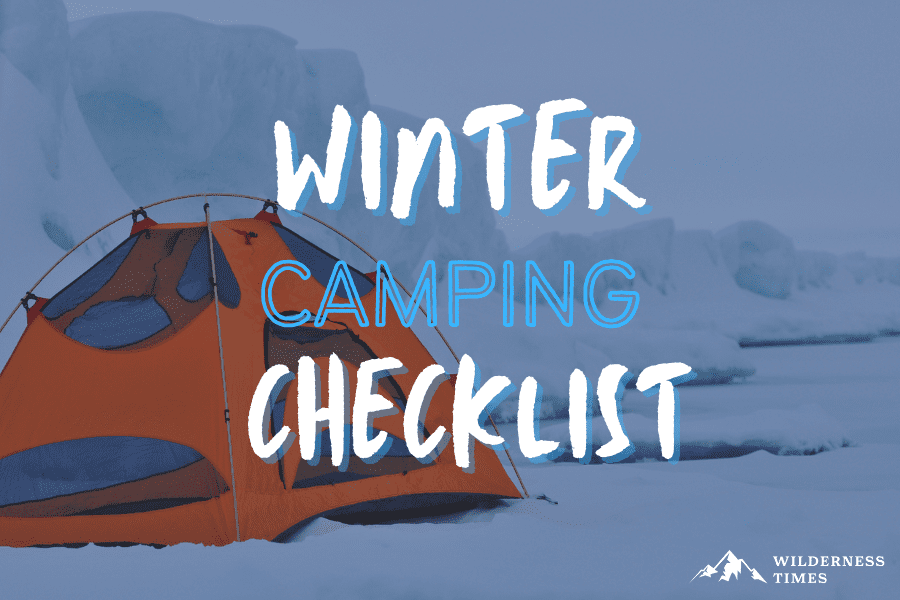Camping in winter is truly a remarkable experience. But without proper planning, it can quickly turn into a disaster.
But there’s no need to look at it that negatively. With a proper checklist, as well as a few tips and tricks up your sleeve, you can easily enjoy camping even in harsh winter conditions.
In this article, we’ll go over what you need to know to have fun out in the wild during winter.
Download Winter Camping Checklist PDF
Winter Camping Gear
Snow gear
- Snow shoes
- Snow shovel
- Trekking poles
- Ice axe
- Snow Boots
Winter Clothing
- Down jacket (insulation)
- Waterproof pants (outer-layers)
- Hiking pants
- Waterproof Gloves
- Thick Warm Socks
- Long Underwear
- Winter Hiking Boots
- Beanies and Hats
Winter Cooking Gear
- Stove + fuel (cold-weather compatible)
- Lighter
- Thermos
Download Winter Camping Checklist PDF
Planning Tips & Hacks for Camping In Winter
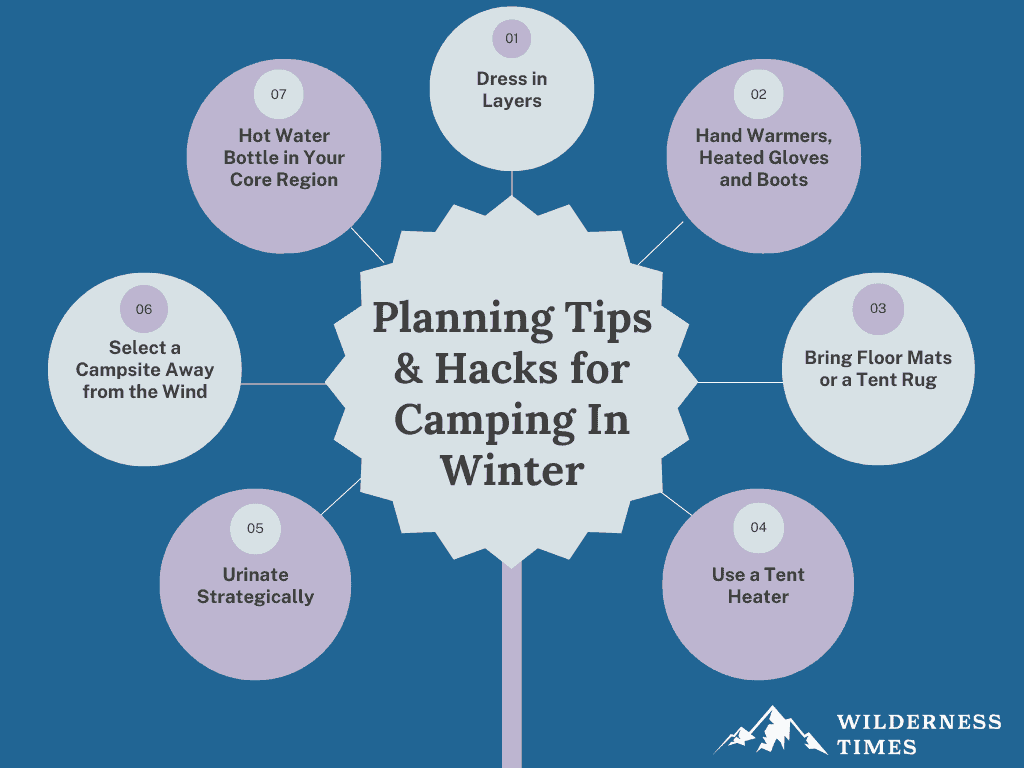
Camping in winter is no rocket science. But, it requires a bit of planning. Here are some things you should know in order to make your trip more enjoyable.
Select a Campsite Away from the Wind
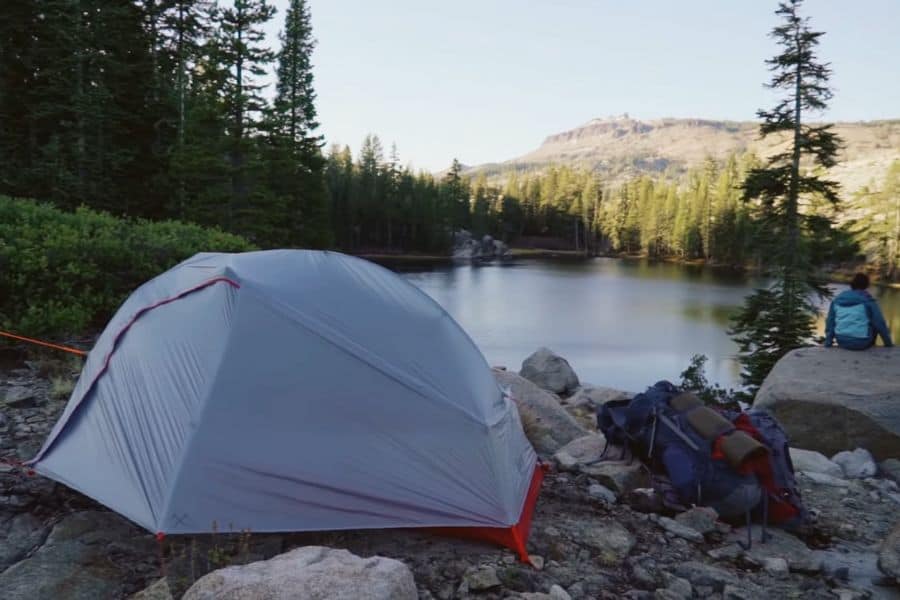
The wind is never enjoyable when you’re camping.
But winter winds are a whole another level. Luckily, you can easily avoid being exposed to it by choosing a campsite with a natural wind block.
Look for places that can provide shelter, like trees or rocks. You can also position yourself behind the hill.
Dress in Layers
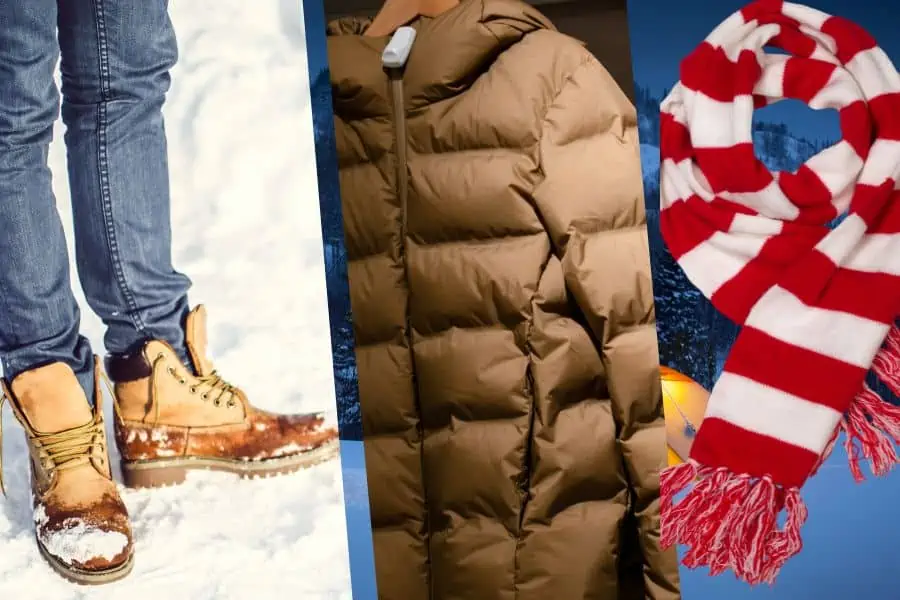
The weather is going to change drastically from morning to evening during winter. You might be hot at some point, then cold pretty quickly.
To be dressed appropriately for any temperature you might experience on your trip, it’s best to dress in layers.
This means wearing something that’s sitting next to your skin, then a few other pieces of clothing over that.
We’ll get into details about it in one of the sections below.
Read: Winter Layering Guide: How to Layer for Cold Weather
Hot Water Bottle in Your Core Region
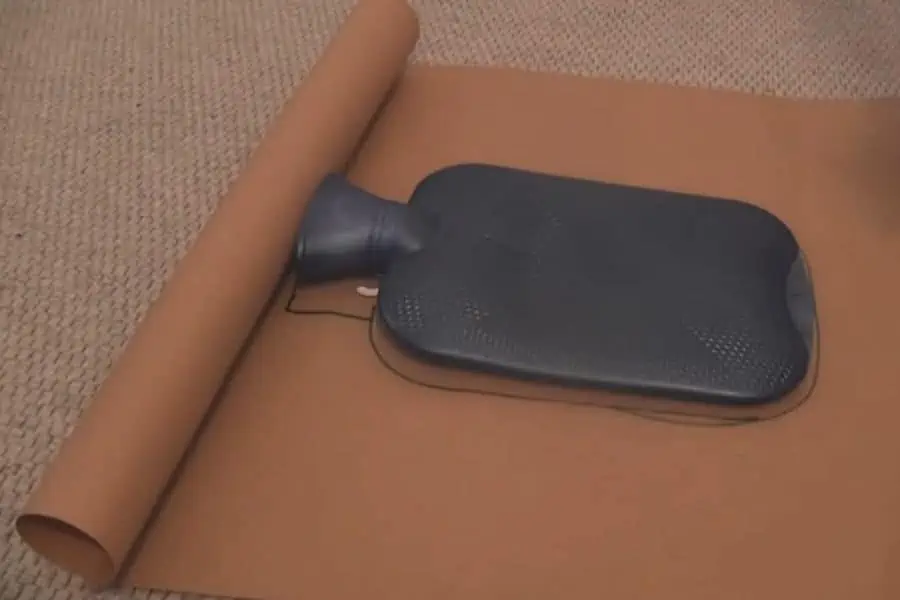
This is a quick and simple hack to stay warm at night. For this, you’ll need a plastic water bottle. Boil water and pour it into the bottle.
Make sure the lid is tight, so that the bottle can’t leak into your sleeping bag.
When you lay down to sleep, place the bottle between your legs or around your stomach.
This will provide heat for many hours, so you can fall asleep comfortably.
Hand Warmers, Heated Gloves and Boots
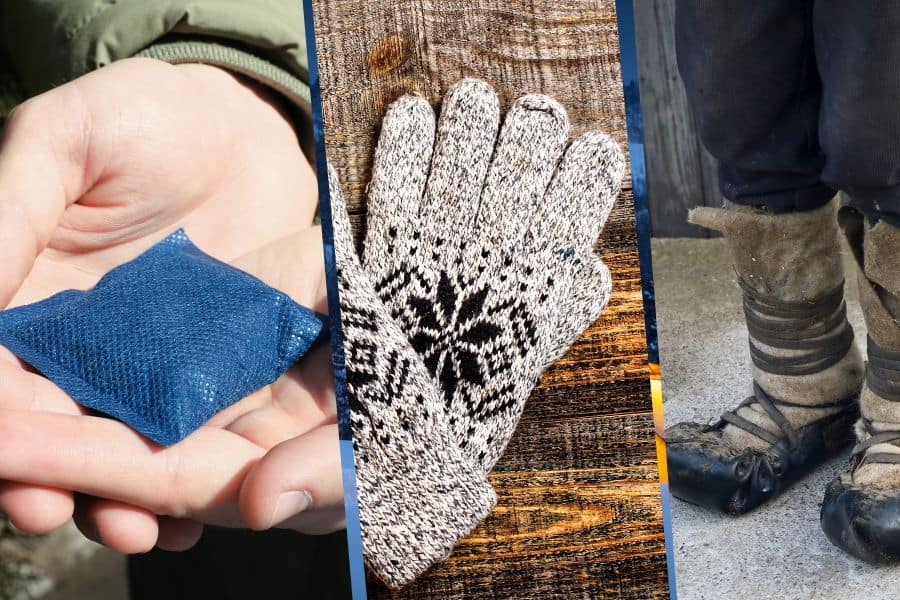
While these might be quite an investment, they surely pay off on those cold winter nights.
Your palms will be the first thing to get cold when you get out.
For that reason, hand warmers and heated gloves (or at least a solid pair of 0 degree gloves) are a great way to protect your hands from harsh chilled air.
As for your boots, there are heated versions as well. These are amazing, as they keep your feet at the desired temperature regardless of how cold it is outside.
Bring Interlocking Floor Mats or a Tent Rug
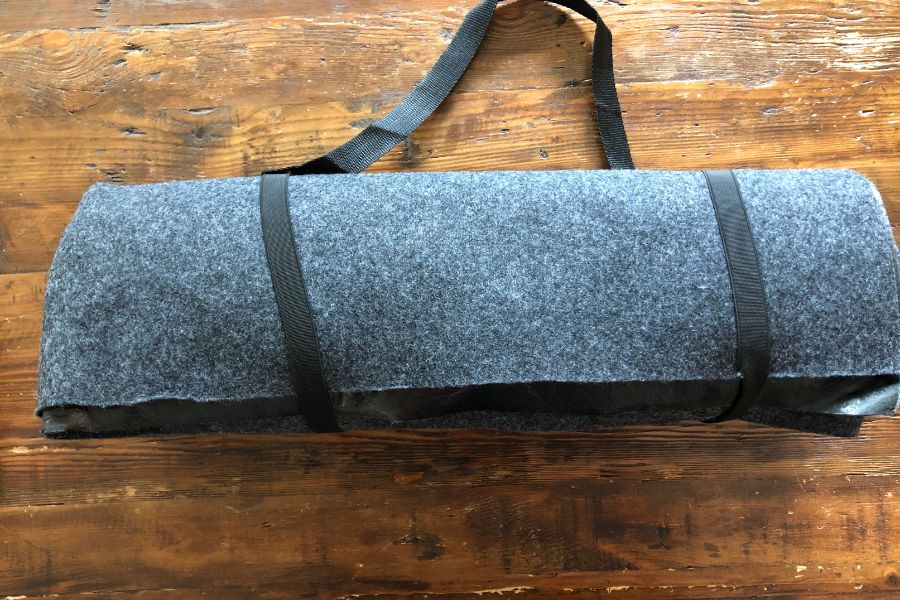
For the most part, a cold will get inside the tent from the ground. The tent floor is really thin, and not the best as insulating you from below.
A footprint or a tarp underneath can help, but there are other things you can add to create a nice layer of insulation.
If you have enough storage space to bring them, interlocking floor mats or tent rugs will keep you warm.
Their texture and thickness prevent cold from getting through the bottom, so the entire tent will feel warmer.
Urinate Strategically (Inside at night)
There’s nothing worse than having to leave your warm sleeping bag to go out in the cold and pee.
Luckily, you can avoid that happening by going to the bathroom strategically. This means not drinking a few hours before sleep (unless you really have to).
Of course, that’s not always entirely avoidable. But, you can use a pee bottle inside the tent, then empty it out in the morning.
For ladies, this also means using a pee funnel as well.
Use a Tent Heater
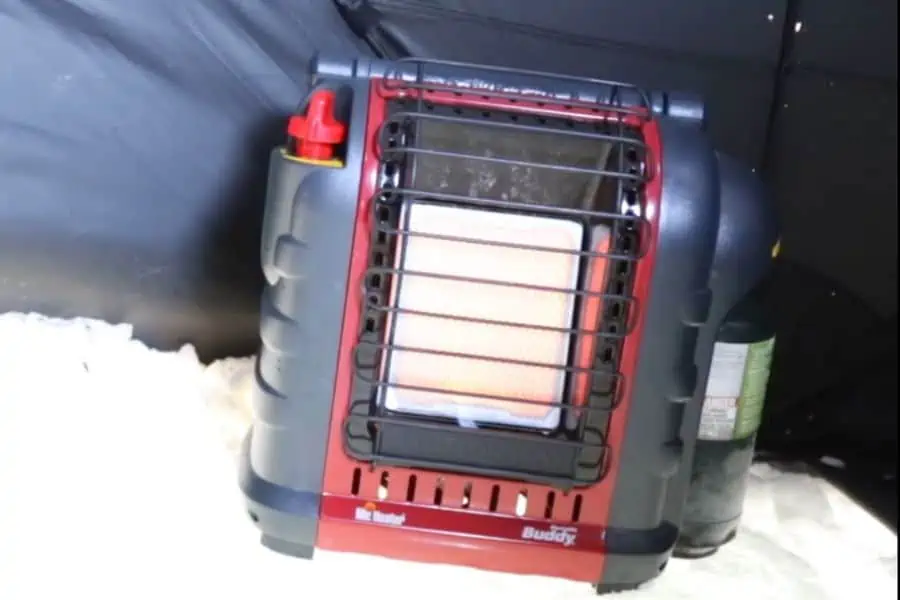
Nothing can keep you as warm as a tent heater. If you’re camping in a place where you have access to an electrical outlet, then you should definitely consider bringing a tent heater.
If you don’t have access to electricity, one alternative would be to use a portable power generator.
That way, you can run your heater even when you are away from electrical sources. Now, these are expensive and take quite a bit of storage space, so they’re not always possible.
Of course, even if you don’t have the option of using an electrical heater, then your other option is the propane one.
Propane heaters can warm up your tent really well. But, you should be cautious when using them.
A propane heater emits CO2 when it burns, which is harmful to your health. Inhaling too much of it can even lead to death.
And without proper ventilation inside the tent, a deadly amount of CO2 quickly accumulates.
What you can do is use it a bit before you lay down, so that the tent gets warm enough to sleep.
Then, you should turn it off until morning, as you should never leave it burning unattended.
Read: Butane vs Propane vs Isobutane (Which is Best?)
Must Have Winter Camping Gear
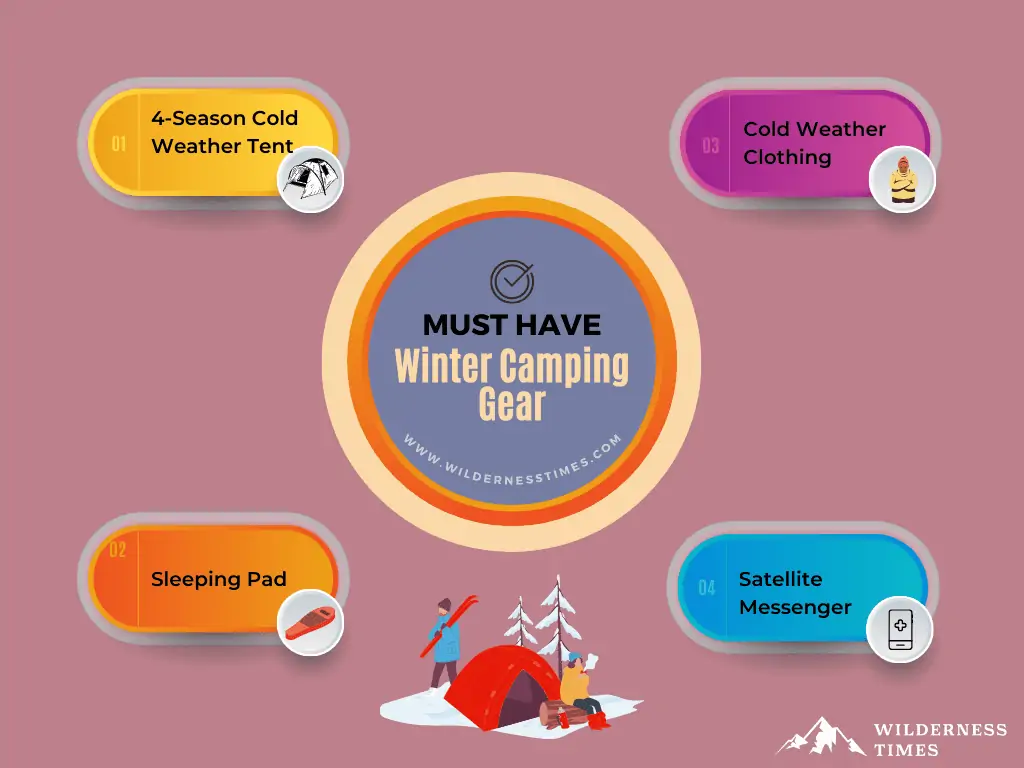
There are many things that can be handy on a winter camping trip. But, some pieces of camping gear are a must. Here’s what you absolutely need to have:
4-Season Cold Weather Tent
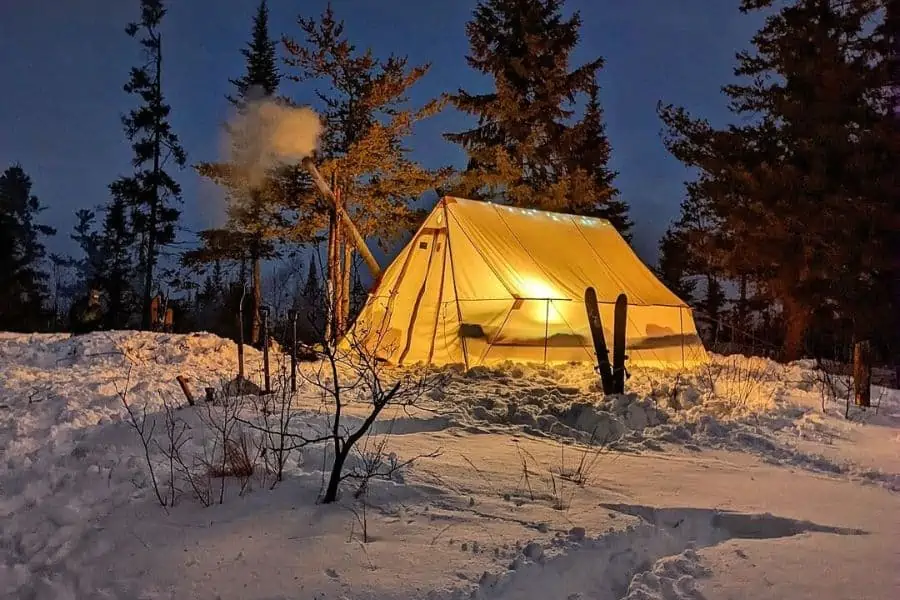
Of course, in some parts of the country winters are mild and dry. But when we say winter, we really mean temperatures hitting around the 30s, with unexpected weather changes.
In these situations, a typical 3-season tent won’t do. These tents are usually rated above 30, meaning they won’t keep you warm when temperatures approach the freezing point.
Plus, they often can’t withstand the harsh weather elements you might experience.
For that reason, you should always use a 4-person tent. This type of tent features sturdy poles and frames that can withstand high winds.
Furthermore, their shape prevents snow and rain from collecting on the roof. Plus, the material is usually 100% waterproof even without additional coating.
Of course, they also must have proper ventilation to get all that air and vapor out. Usually, the rainfly protects vents and windows from weather elements while allowing air in.
Now, you might not be able to store your gear outside in case of bad weather. But, you can bring an additional tent for your equipment.
For this, you can use a 3-person tent, as you don’t actually need to keep your stuff warm. But make sure it’s waterproof and able to withstand wind.
Sleeping Pad (Not Air Mattress)
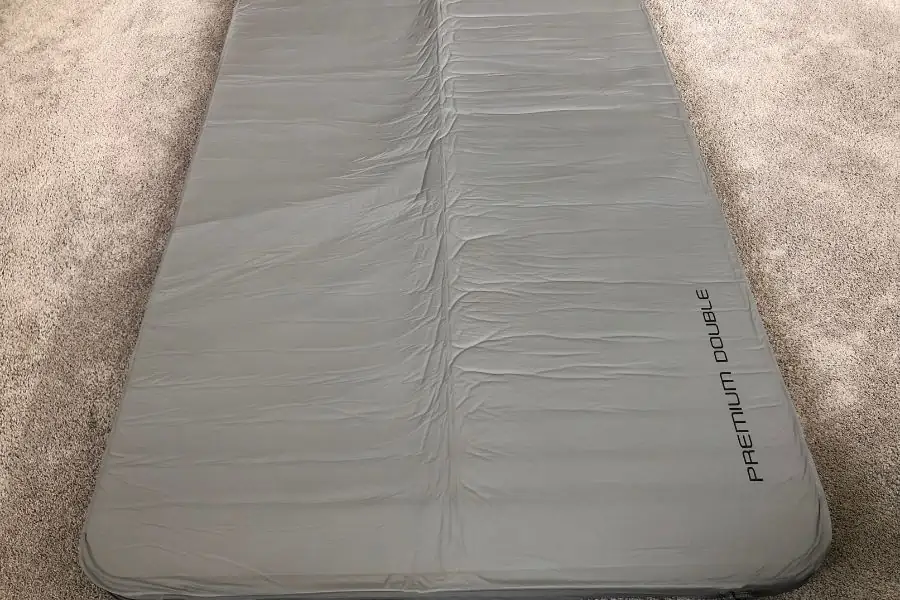
Let’s be honest, a sleeping pad can’t compare to an air mattress in terms of comfort.
But an air mattress is really bad at insulating. Basically, it will suck all the heat away from your body, while letting the cold air from the bottom reach you.
While it’s not the comfiest option, a sleeping pad is still the best option in winter.
They’re actually designed to act as an insulating layer between you and the ground, so you won’t feel the cold from underneath you.
Best of all, sleeping pads will state a specific R-value, thereby showing you in advance the type of insulation and warmth that they will provide.
Read: sleeping pad vs. air mattress
Cold Weather Clothing & Footwear
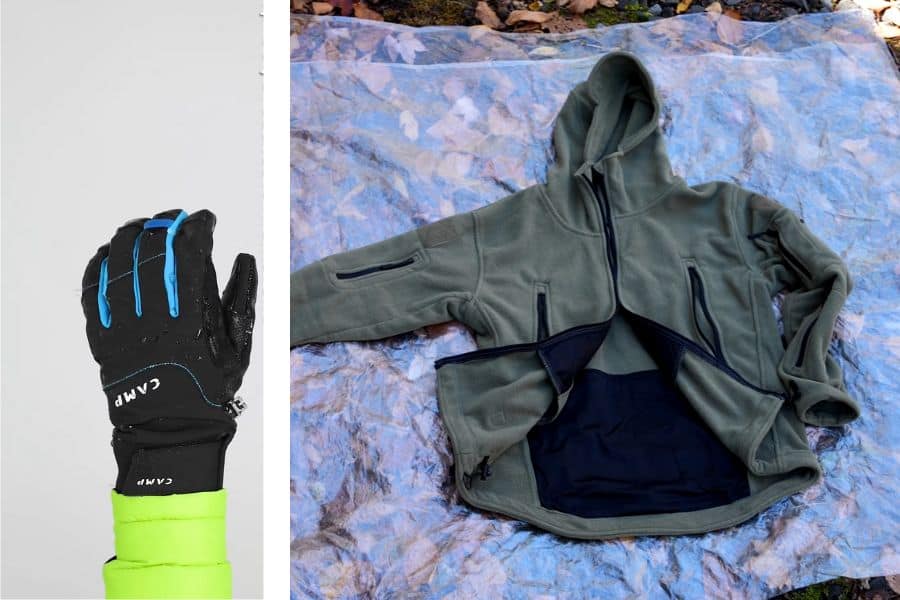
Extreme weather conditions require warm apparel. It’s important that your outer layers are wind and waterproof.
Then, you’ll have a layer underneath to actually keep you warm, such as a fleece jacket.
As for your head, a wool beanie is your best bet. It should be large enough to fully cover your ears, as that’s the part of your head that gets cool the fastest.
Of course, always have a backup hat or two, in case it gets wet.
Gloves or mittens are also necessary. Now, there are models designed for extreme weather, which usually feature thin but warm material.
They allow you a full range of motion with your hands, while keeping you protected from cold air.
As for the boots, you should wear something that’s waterproof as well as insulating.
When it comes to socks, wool is again your best friend. In case of snow, you’ll need gaiters to prevent it from getting inside your boots and getting your feet wet.
Satellite Messenger/Emergency Beacon
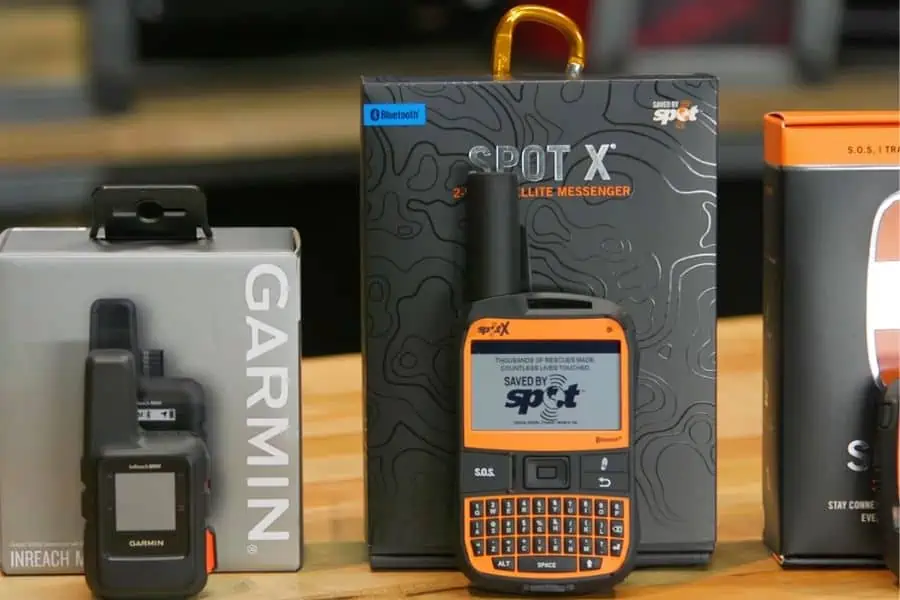
Unexpected weather conditions can cause natural disasters, such as an avalanche. You can’t always predict it, so you should have a way of communication in case it happens.
A satellite messenger and emergency beacon are two tools that can help you communicate with others without electricity and reception.
Winter Camping Layering Tips
As I’ve already said, you should always dress in layers when camping in winter. The weather can change drastically within a few hours, and you need to be well equipped for whatever temperature you might experience.
Base Layer
The base layer is what goes closest to your skin.
In this case, your best option is underwear that goes mid-length. It should be made of either wool or polyester, as these two materials both wick away moisture from your body and dry out pretty quickly.
Mid Layer
The middle layer is what’s supposed to keep the heat from your body inside. This means wearing something you find comfy and warm, such as a down jacket.
Fleece or polyester are also good alternatives.
As for the bottoms, choose something like leggings or fleece pants. These should be a bit tiger around your legs, as you’re going to wear another layer over it.
Outer Layer
Finally, the outer shell. This is the jacket for your jacket – the part that only protects you from weather elements, but doesn’t do much in terms of warmth.
By this, I mean some kind of waterproof jacket. Of course, the bottom part should also be waterproof.
Keep in mind that your outer layer should also be breathable. That way, if you start sweating underneath, perspiration can escape through the material.
Winter Camping Safety
Safety should always be your priority, but you should take extra precautions when camping in winter. Here are some things you should keep in mind.
Stay Dry
In such harsh temperatures, you don’t want to be wet for more than a minute. Otherwise, that’s a quick path to getting pneumonia. For that reason, you should wear multiple layers. If the outer one gets wet, simply remove it.
Stay Hydrated
When it’s cold outside, you might not feel thirsty. But that doesn’t mean you aren’t. Actually, by the time we do feel thirsty, we’re already dehydrated.
Make sure to sip water throughout the entire day. If the fire is running, you can make tea or coffee to keep you both warm and hydrated.
Of course, don’t go overboard drinking, or else you’ll spend a lot of time going to the bathroom. When it’s cold outside, that’s not quite comfortable.
Do not Skimp on Gear
Get gear that’s actually designed for winter use. Your regular hiking boots won’t do when it’s snowing.
The same goes for a jacket you might use in the city when the weather is dry. It’s really worth investing in high-quality winter gear, as there’s nothing more important than staying warm and dry.
Camping in winter FAQs
Can you survive in a tent in the winter?
Of course, as long as you’re properly equipped. Make sure the tent is designed for winter use, and that you have gear that’s both waterproof and with an adequate temperature rating.
How can I keep my tent warm without electricity?
You can add layers of insulation, such as a tarp both over and under the tent. Another great option is rugs inside your tent, which prevent the cold air from reaching underneath.
Finally, use a tent that’s not too big, as all that extra headroom can be filled with cold air.
What heater is safe to use in a tent?
Electrical heaters are generally safe to use inside a tent. When it comes to those working on gas, you should take extra precautions, as they might emit dangerous substances into the air.
Without proper ventilation, the air inside the tent can get to toxic levels rather fast.
How do you make a homemade tent heater?
You can make a tent heater with two cans and toilet paper. Basically, you need to stuff the can with toilet paper, then place it inside a larger can.
Saturate the toilet paper with alcohol, and let it burn. Make sure there’s enough airflow inside the tent.
To Sum Things Up
Camping in winter can be quite fun and enjoyable, as long as you take a few extra precautionary steps.
But with this checklist, there’s no way you can forget something crucial for a fun expedition.

